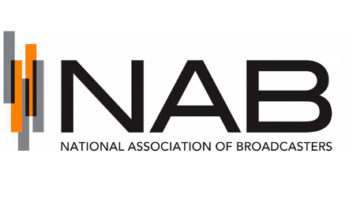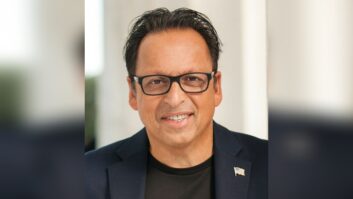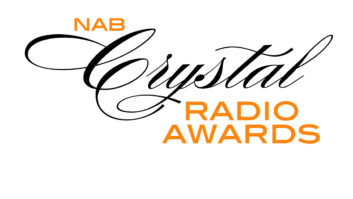
Jackson Wang
The final day of the 2016 IEEE Broadcast Technology Society Symposium began with a session on “the broadcast plant,” chaired by Paul Donovan, CBS Radio VP of engineering. Leading the Friday morning presentations was Jackson Wang, president of E-Radio, who described a new application for FM radio broadcasting — relaying information from electric power companies for controlling “smart” appliances in consumers’ homes (“FM RDS Field Performance in Smart Grid Applications”).
Wang cited the rising acceptance and deployment of battery-powered cars, noting they were an area where this technology could help balance generation loads for utility companies.
“It turns out that a lot of folks just plug the vehicle in when they come home as it’s convenient,” said Wang. “We think broadcasting can have a tremendous role in reaching all of these devices [chargers].”
Next up was Peter Burk, president of Burk Technology, who described the development of a new polling protocol to more efficiently transmit and process data being sent from multiple remote transmitter sites.

Dielectric’s Dan Fallon begin his presentation by plugging a “new product” from his company, “Dielectric Water.” (Dielectric was a symposium sponsor and issued bottles of the specially branded drinking water to attendees.)
“This enables data to be transmitted by the internet very efficiently,” said Burk. “A site reporting 32 values once every second consumes only 980 MB per month.”
Transmission of digital audio from studio to a remote transmitter has recently gotten a boost from the new Telos Alliance μMPX codec, and Hans Van Zutphen, CEO of Thimeo Audio Technology, described this in his presentation, “A New Way to Transmit FM Composite Signals Reliably Over a Low-Bandwidth Connection.”
Improvement in another area of FM broadcasting was addressed by Dan Fallon, senior engineer at Dielectric, who described some new transmitter plant technology in his presentation, “Improving FM Combiner/Filter Efficiency and Size Using Non-Conventional Coupling.”
The final symposium radio presentation — “The Effects of Bit Rate Reduction on Psychoacoustic Watermarking” — was offered by Paul Shulins, director of technical operations at Greater Boston Media.

Paul Shulins
Shulins noted that concern has been expressed over possible inaccuracy in ratings information gleaned through the use of Portable People Meters which respond to hidden watermarking tones transmitted within program audio.
“We do not yet fully understand the effects of audio compression with regard to the transmission of acoustic watermarks,” said Shulins. “This could have a significant effect on reported ratings. Are we passing these watermarks efficiently all of the time?”
Shulins described testing methodology used to investigate the effects of bitrate reduction both before and after encoding for HD radio transmission.
The executive director of the new Pilot initiative at the NAB, John Clark, provided the Friday luncheon keynote address, stressing the continuing need for innovation which benefits mankind.
Following the luncheon, the achievements of three BTS members were recognized in an awards ceremony. The Matti S. Siukola Memorial Award (presented for the best paper delivered at the previous year’s symposium) was jointly presented to Joseph M. Davis, president of Chesapeake RF Consultants, and Tim Laud, senior technical staff member at Zenith Electronics. Dual awards were made this year, as the papers of Davis and Laud scored identically in the judging process.

Lynn Claudy (R) receives the Jules Cohen Outstanding Engineering Achievement Award from BTS President Bill Hayes.
Lynn Claudy, NAB senior vice president of technology, was awarded the Jules Cohen Outstanding Engineering Achievement Award. The Cohen Award was only recently established; Claudy is the second recipient.>
The 2017 BTS Symposium will take place Oct. 4–6 in Arlington, Va.
Related:
2016 IEEE Broadcast Symposium Curtain Rises in Hartford
Day Two Broadcast Symposium Presentations Focus on RF





